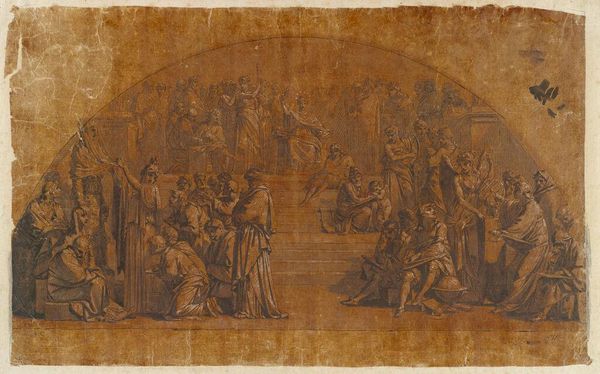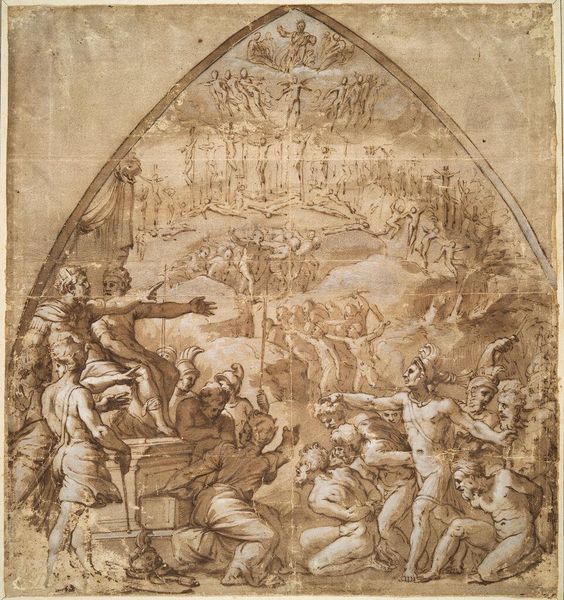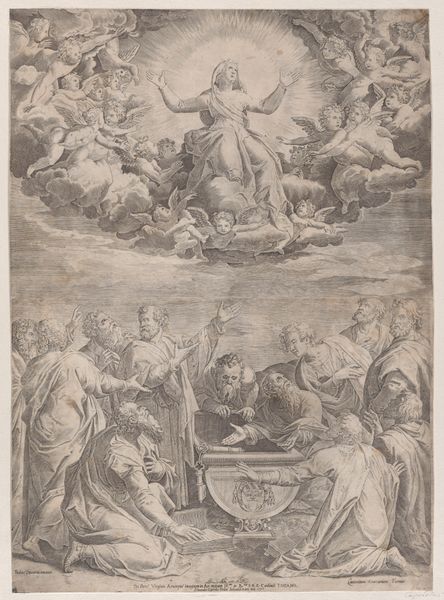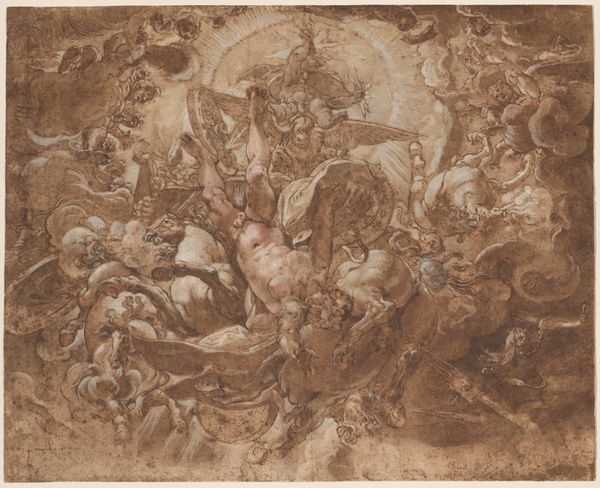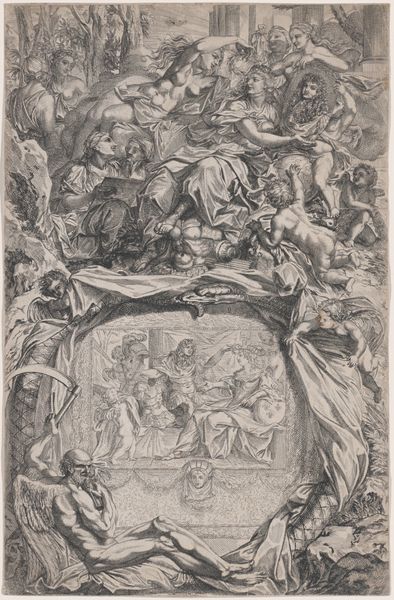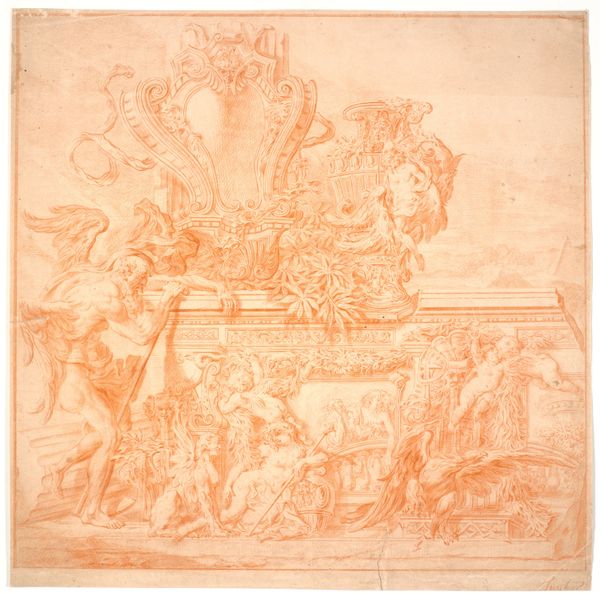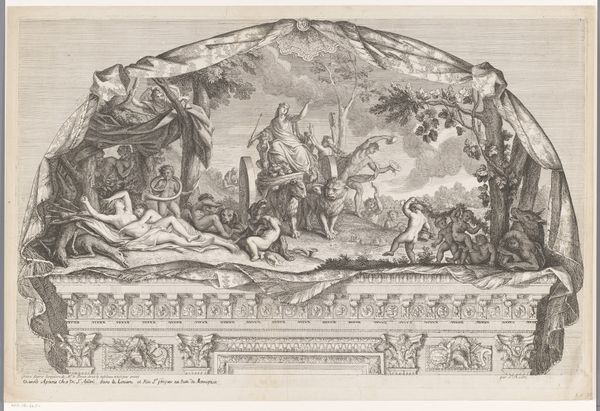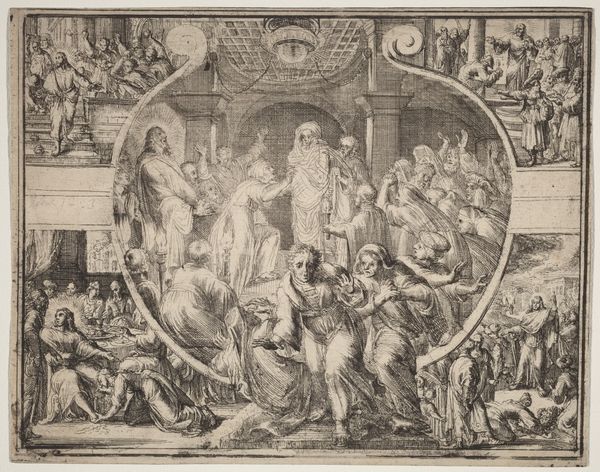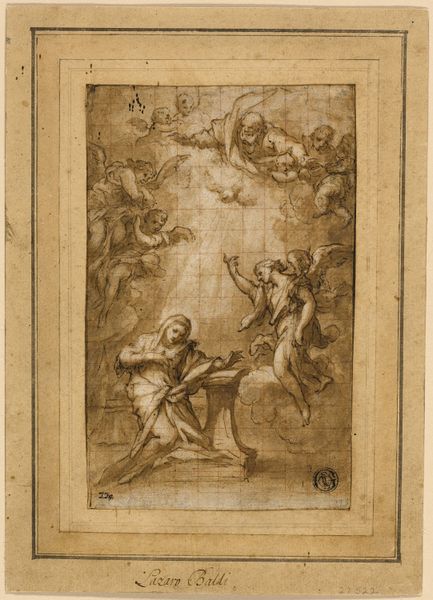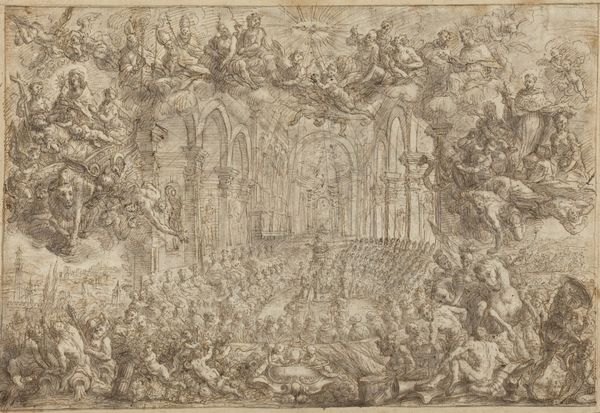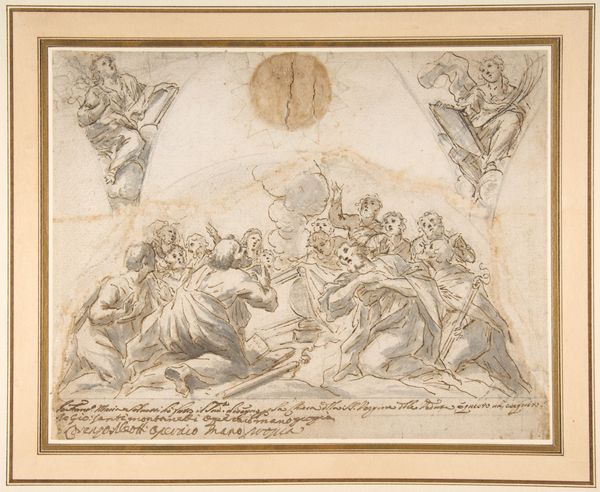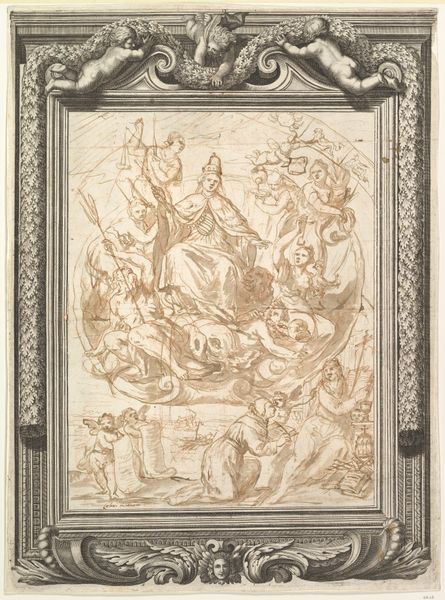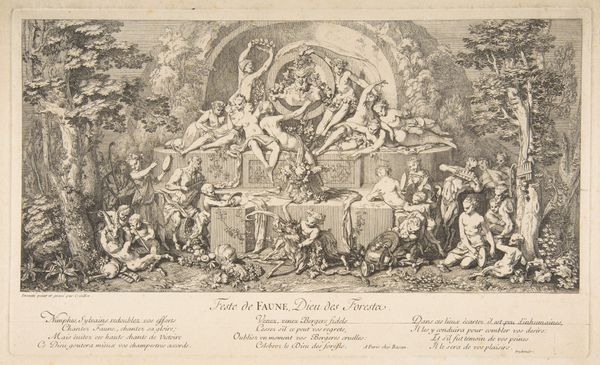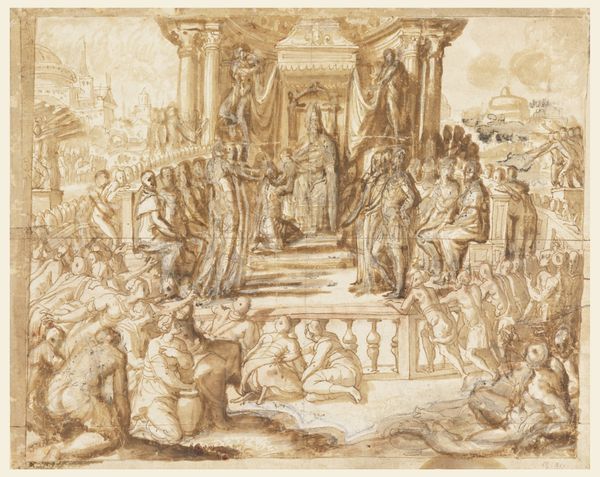
drawing, print, charcoal
#
drawing
#
allegory
# print
#
charcoal drawing
#
figuration
#
11_renaissance
#
charcoal
#
history-painting
#
italian-renaissance
#
angel
Dimensions: 15 7/8 × 44 13/16 in. (40.3 × 113.8 cm)
Copyright: Public Domain
Curator: This drawing is "Paradise" by Federico Zuccaro, dating from about 1565 to 1577. It is currently located in the Metropolitan Museum of Art. Editor: My first impression is that it has a luminous, ethereal quality despite the earthy charcoal medium. The composition is fascinating; densely populated and yet it breathes. Curator: Indeed. The sheer quantity of figures hints at the artist's studio practice; probably executed in preparation for a larger commission or fresco, showcasing Zuccaro's organizational skills and mastery of pictorial space. It is a testament to the artistic labor involved in producing monumental artworks during the late Renaissance. Editor: The swirling composition draws the eye upwards. I'm particularly interested in how Zuccaro has arranged the figures. It seems less about individual likeness and more about a structural whole, a carefully considered distribution of light and dark masses that create a sense of otherworldly dynamism. The very conscious employment of quadratura hints towards High Renaissance ideals of harmony. Curator: Consider also the economic context. Zuccaro moved among courtly circles; designs such as this would circulate, signifying not just his artistic skill but his professional network. The materiality of the drawing itself—the relatively inexpensive charcoal—belies its function as a powerful tool in building his reputation. Editor: True. Though I remain most interested in the way that his figures and forms are constructed here, how he has structured space in an incredibly innovative way to express a divine and immaterial presence. There’s a certain drama enacted solely through line and tone. Curator: Looking at Zuccaro’s broader output and influence, one might wonder what the nature of artistic training was, especially apprenticeships during the time? How that social framework enabled such highly skilled craftsmanship to flourish? Editor: Regardless of context, it offers a transcendent vision. A structured, celestial order is being projected here, which resonates far beyond mere draughtsmanship. Curator: Ultimately, considering artistic production helps enrich my understanding of historical value systems. Editor: And, from a formal perspective, analyzing this drawing provides deep insight into the period's artistic sensibilities, doesn’t it?
Comments
No comments
Be the first to comment and join the conversation on the ultimate creative platform.
